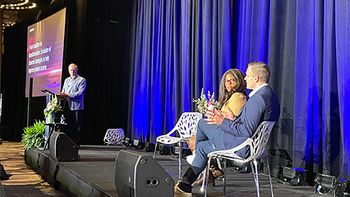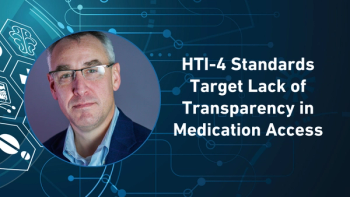Resilience, which is the concept of defying adversity and recovering from hardship, is connected to one’s health and well-being.1 However, on the other hand, via behavioral, inflammatory, metabolic, and pathways, acute and chronic stress can speed up biological aging, along with the risk of chronic disease.
Capabilities that enhance resilience by decreasing the intensity of distress, aiding recovery from stress, and encouraging healthy behaviors could potentially play a role in shaping downstream outcomes. One example of comes in middle-aged adults—there’s been an association between higher resilience and reduced hypertension risk over 10 years for this particular age group.1
There have been instances where qualitative research has examined the personal experiences of resilience during the COVID-19 pandemic—a time in which being able to act fact when treating a COVID infection can provide a high success rate for decreasing the risk of severe disease and hospitalization.2
Gaps in measuring resilience during COVID-19
However, quantitative measures of coping capacity and observable resilience indicators are rather underexplored. Having said that, a cross-sectional study published in JAMA Network Open sought to explore the factors related to self-reported resilience during the pandemic across various racial and ethnic groups.1
Key Takeaways
- Black and Hispanic participants reported higher resilience during the COVID-19 pandemic compared to White participants, while American Indian and East Asian participants reported lower resilience.
- Higher education, income, marriage, and private insurance were strongly linked to greater resilience, while being female, unemployed, or having diabetes were linked to lower resilience.
- Findings underscore the need for systemic interventions addressing social and structural inequities to enhance resilience across diverse populations.
About the study: Data and methods
This study pulled data from the Collaborative Cohort of Cohorts for COVID-19 Research (C4R) study, consisting of 14 established cohort studiesthe United States aimed at analyzing cardiovascular, pulmonary, and neurological health. The investigators homed in on the “bounce-back” aspect of resilience—also known as “the self-perceived ability to recover from adversity,” which according to the Brief Resilience Scale (BRS), is the main component of resilience.
Participants provided informed consent for COVID-19–related follow-up activities that were aligned with cohort-specific protocols, such as verbal, remote, and written methods. The study featured participants who had responded to the resilience question on C4R questionnaire that were completed between the January 2021 and February 2023 timeframe. Although data was originally examined from October 2023 to May 2024, an updated analysis occurred from August 2024 to April 2025.
The primary outcome was self-reported resilience during the COVID-19 pandemic, which was gathered from one BRS item: “I tend to bounce back quickly after hard times.” Those who responded “agree” or “strongly agree” were consiered resilient, while participants who responded “neutral,” “disagree,” or “strongly disagree “were considered not resilient for the sake of the study.
It’s important to point out that the BRS is a six-question questionnaire, but only one item was included as part of C4R survey as a way to limit the participant burden.
Overall, the cross-sectional study featured a total of 31,045 participants (18, 672 [60%] women; 10 ,746 [34.6%] aged <65 years), from 14 US prospective cohorts, and 23,103 of them (74.4%) self-reported resilience.
Key findings: Racial and social disparities in resilience
Black and Hispanic participants had statistically significantly higher prevalence ratios of resilience compared with White participants, while American Indian and East Asian participants had lower prevalence ratios (10% and 24%); higher education, being married, higher income, and private insurance were associated with greater resilience.
When compared with White participants, Black and Hispanic participants had a higher prevalence of self-reported resilience (adjusted PR [aPR], 1.04; 95% confidence interval, or CI, 1.02-1.06; aPR, 1.08; 95% CI, 1.06-1.11; respectively), while American Indian and East Asian participants had lower prevalence (aPR, 0.90; 95% CI, 0.86-0.94; aPR, 0.76; 95% CI, 0.68-0.84; respectively).
Higher education, marriage, higher income, overweight status, and private insurance were connected to greater resilience. Meanwhile, being female, unemployed, or having diabetes were connected to lower resilience. One’s COVID-19 vaccination and infection status did not display any significant association, although racial and ethnic differences impacted how factors like hypertension and insurance status were linked resilience.
The study authors concluded that “this cross-sectional study provided important insights into factors associated with self-reported resilience during the COVID-19 pandemic in a large, diverse US sample. Our findings highlight significant racial and ethnic differences in self-reported resilience and underscore the importance of social and structural factors. Higher education, income, and social support were consistently associated with greater resilience across racial and ethnic groups, highlighting the need for policies and interventions that promote access to these resources. The partial mediation of racial and ethnic disparities by social determinants of health further emphasizes the role of systematic inequities and the need for equity-focused approaches to promoting resilience in the face of adversity.
“As the world continues to grapple with the impacts of the COVID-19 pandemic and other crises, understanding and promoting healthy resilience is important. The findings of this study illustrate the complex interplay of individual, social, and structural factors that shape resilience and emphasize the need for strategies that move beyond individual-level interventions to address broader systemic inequities. Building a more resilient, equitable, and just society requires not only supporting individuals but also dismantling the structural barriers that create vulnerability.”
References
1. Ogungbe O, Wang T, Balte PP, et al. Self-Reported Resilience During the COVID-19 Pandemic. JAMA Netw Open. 2025;8(7):e2520360. doi:10.1001/jamanetworkopen.2025.20360
2. Saraceno N. Study Connects COVID-19 Treatment Disparities to Gaps in Testing and Virtual Access. Pharmaceutical Commerce. July 11, 2025. Accessed July 18, 2025. https://www.pharmaceuticalcommerce.com/view/study-connects-covid-19-treatment-gaps-testing-virtual-access






